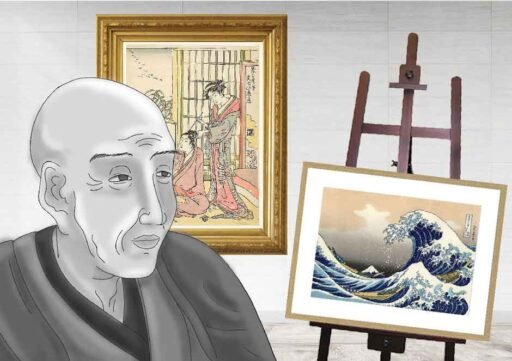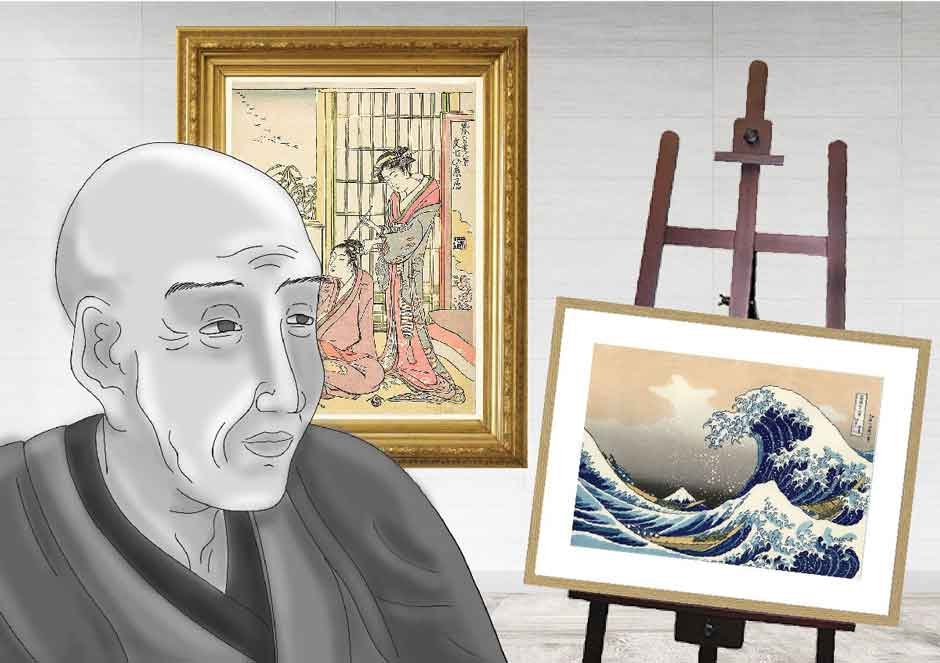Katsushika Hokusai, one of Japan’s most renowned artists, is best known for his iconic work “The Great Wave off Kanagawa.” His life spanned nearly nine decades, during which he created a vast body of work that has influenced artists worldwide. This article explores Hokusai’s early years, his artistic evolution, and his lasting legacy.
Early Years and Artistic Beginnings
Born in Edo (now Tokyo) in 1760, Katsushika Hokusai was originally named Tokitarō. His family were artisans, with his father reputedly a mirror maker for the shogunate. This early exposure to craftsmanship likely influenced Hokusai’s artistic inclinations. At the age of 14, he was apprenticed to a wood-carver, and by 18, he had joined the studio of Katsukawa Shunshō, a master of ukiyo-e, the “pictures of the floating world” genre.
During his time with Shunshō, Hokusai began producing actor prints under the name Katsukawa Shunrō. However, a fallout with Shunshō’s studio led him to explore new styles and subjects, marking the beginning of his innovative journey.
Evolution of Style and Major Works
Katsushika Hokusai was a prolific artist who constantly reinvented himself, adopting over 30 pseudonyms throughout his career, each marking a new phase in his artistic development. His most significant transformation occurred in his 50s when he began creating landscapes, a departure from the traditional ukiyo-e focus on courtesans and kabuki actors.
The series “Thirty-Six Views of Mount Fuji,” produced in the early 1830s, is perhaps Hokusai’s most famous work. This series, including “The Great Wave off Kanagawa,” showcases his mastery of color, composition, and the use of perspective. Katsushika Hokusai’s innovative techniques and his portrayal of everyday scenes resonated deeply with both Japanese and Western audiences.
Personal Struggles and Later Years
Despite his artistic success, Katsushika Hokusai’s life was marked by personal and financial struggles. He faced the deaths of his wives and children, and his financial instability was a constant challenge. Nevertheless, these hardships did not hinder his creativity. In fact, Hokusai claimed that his art improved with age, famously stating that he hoped to become truly great by the age of 110.
In his later years, Hokusai produced the series “One Hundred Views of Mount Fuji,” further cementing his legacy as a master of landscape art. Even in his 70s and 80s, he continued to innovate, producing works that displayed a bold use of color and dynamic compositions.
Influence and Legacy
Katsushika Hokusai’s influence extends far beyond Japan. His work played a crucial role in the Japonisme movement in Europe during the late 19th century. Western artists like Vincent van Gogh, Claude Monet, and Edgar Degas were profoundly inspired by Hokusai’s prints, particularly his use of line and color.
Moreover, Hokusai’s approach to composition and his depiction of natural forms had a lasting impact on modern art. His ability to capture the power and beauty of nature continues to resonate with artists and art enthusiasts worldwide.
Enduring Popularity
Today, Katsushika Hokusai’s works are celebrated globally. Major exhibitions of his prints are regularly held in prestigious museums, and his influence can be seen in contemporary art and pop culture. “The Great Wave off Kanagawa” has become an iconic image, often reproduced and referenced in various media.
Hokusai’s dedication to his craft, his innovative spirit, and his ability to adapt and evolve as an artist have ensured his place in the annals of art history. His works remain a testament to the enduring power of artistic creativity and the profound impact one artist can have on the world.
Conclusion
Katsushika Hokusai lived a life dedicated to art, overcoming personal and financial challenges to create a legacy that continues to inspire. From his early years in Edo to his lasting influence on global art, Hokusai’s journey is a remarkable testament to his talent and resilience. His works, especially “The Great Wave off Kanagawa,” remain timeless, capturing the imagination of generations and securing his place as one of the greatest artists in history.





